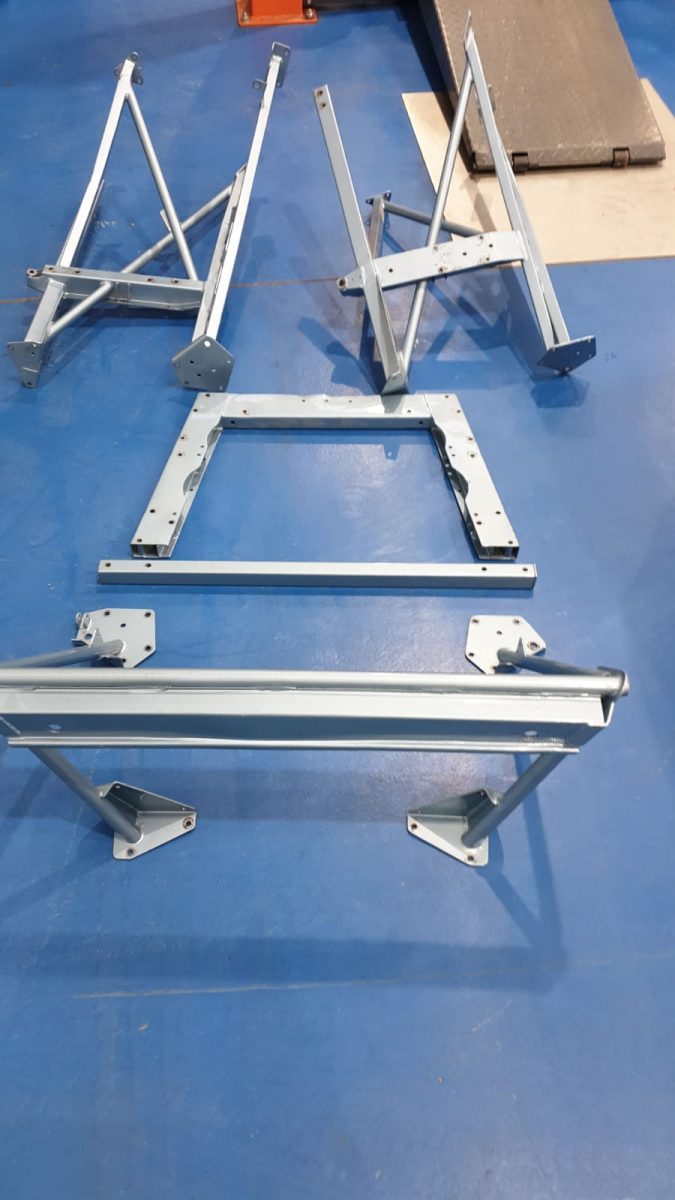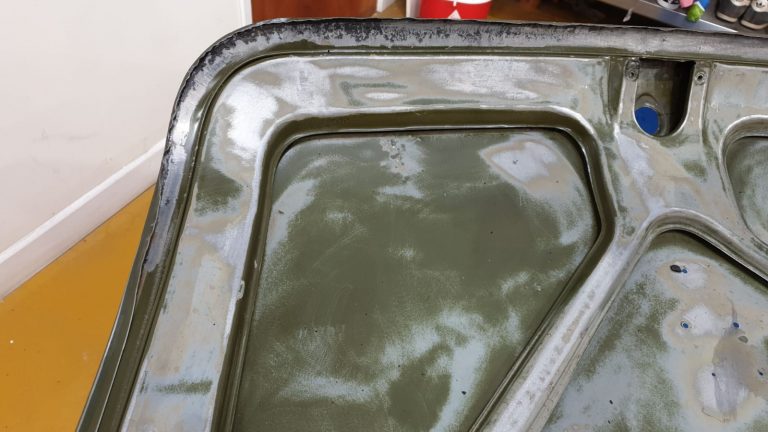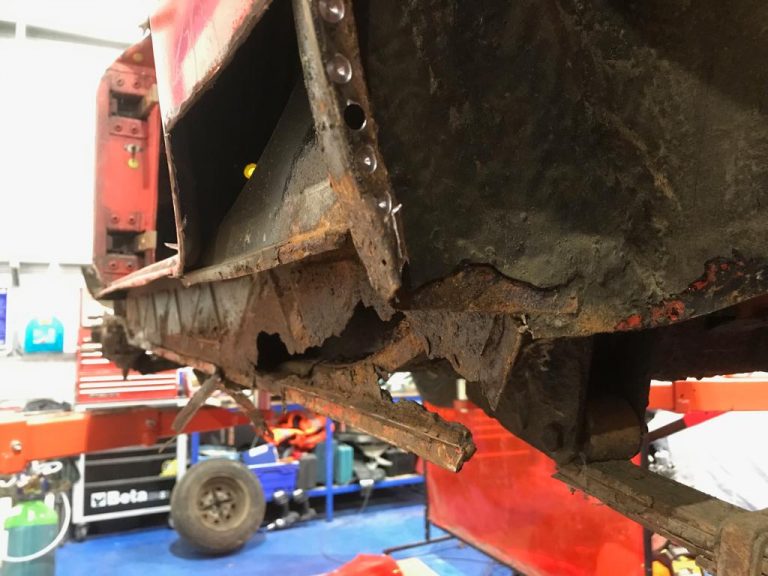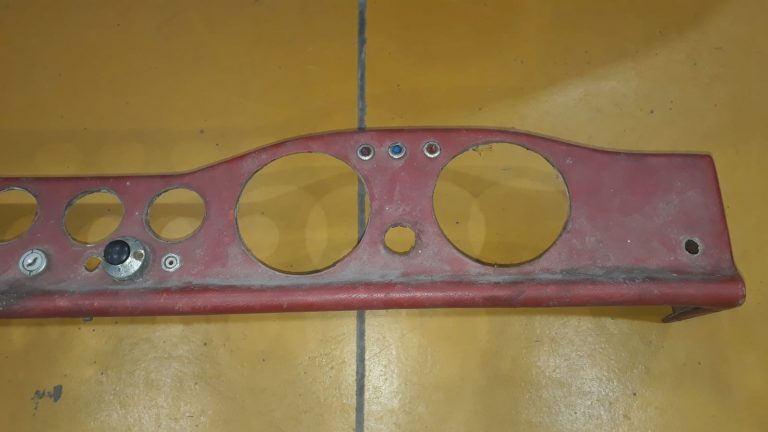
Repairing the Jaguar E-Type frames ready for paint
We have now repaired the damage to the front frames of our Jaguar E-Type so these are ready to go to paint along with the


We have now repaired the damage to the front frames of our Jaguar E-Type so these are ready to go to paint along with the

In order to repair the affect areas of the boot lid we have removed the outer skin, cleaned off the surface rust before repairing, treating,

Tommy is now working on our 1977 MGBGT body. Certain areas, particularly the sills are heavily corroded and will need both repairing and replacing. The

Brian spent a short while cleaning up the TVR dash and centre column to assess whether it would be acceptable enough to be refitted without

From a far, the paintwork on our 1972 Jaguar E-Type looks lovely. The light blue finish is striking but upon closer inspection there are a
We have now repaired the damage to the front frames of our Jaguar E-Type so these are ready to go to paint along with the body shell.
In order to repair the affect areas of the boot lid we have removed the outer skin, cleaned off the surface rust before repairing, treating, sealing. The outer skin has then been re-applied to complete the task. The boot lid is now ready to be prepared alongside the bodyshell
Tommy is now working on our 1977 MGBGT body. Certain areas, particularly the sills are heavily corroded and will need both repairing and replacing.
The front valance and outer sills will be replaced with new parts supplied by our good friends at Moss Europe. The centre sill will be cut out, the affected areas are cleaned up and repaired with new metalwork being fitted and secured in place.
Moss are one of the world’s oldest and largest sports car parts and accessories specialists.
Brian spent a short while cleaning up the TVR dash and centre column to assess whether it would be acceptable enough to be refitted without re-covering.
As much as it has brought life back into the tired looking parts we feel it is best to re-cover for maximum impact. Against the newly painted body shell it is just not quite good enough to be refitted as is.
From a far, the paintwork on our 1972 Jaguar E-Type looks lovely. The light blue finish is striking but upon closer inspection there are a lot of imperfections that we knew we needed to address.
The car was painted approximately 10 years ago but unfortunately it looks as though the car may have been repaired and painted with moisture in the air. The body has signs of micro blistering all over which is not good news.
Many causes of micro-blistering occur when vehicles are repaired or painted under adverse conditions.
You can minimise the chances of blistering by ensuring your paint area is kept clean and dry. During paint application, you need to use the correct thinner with each and every coat of paint. It is certainly not advised to apply cheap quality thinner where the moisture content is often above specified levels. You should apply sufficient primer and topcoat in even coats. Ensure a sufficient primer film is left after sanding followed by a similar film weight of topcoat. Low film build of either or both weakens the paint structure and can very easily lead to blistering. Spot or localised repairs are very noticeable as the feather edge part of the area would undoubtedly have a low film weight. Low film weight is one of the most common causes of blistering, combined with adverse environmental conditions.
The car will now be stripped back bare as we see signs of rust appearing and this will need to be addressed as a matter of urgency. Painting and preparing without correcting issues first will result in a similar effect happening within a matter of months.
Bridge Classic Cars are award winning Classic Car Restoration and Maintenance specialists. Your pride and joy is in safe hands with our expert Classic Car Technicians. Take a look at our awards here.
We use cookies to deliver the best possible experience whilst visiting our website. By clicking "Accept All", you consent to our use of cookies, or you can manage your preferences by clicking the link below. You can manage your preferences at any time from out Cookie Policy page.